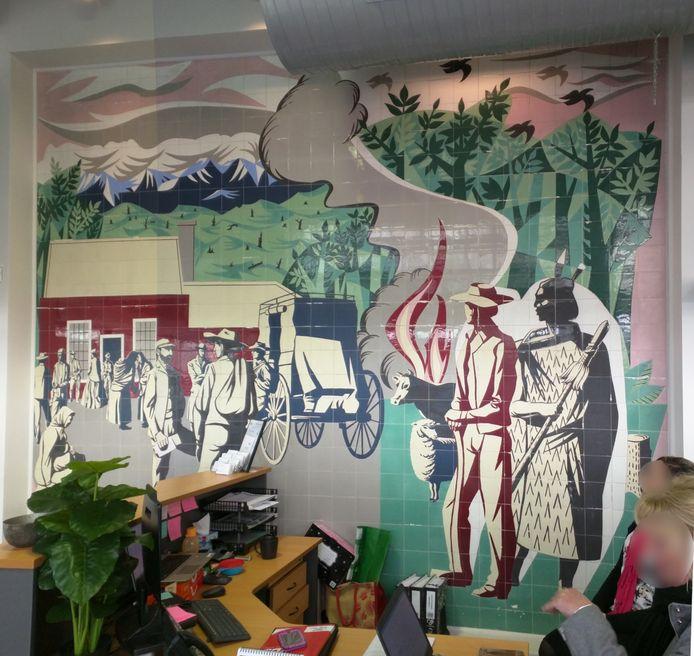
E. Mervyn Taylor, ‘Early Settlers’ (1962), 122 Queen St (former Post Office Building), Whakaoriori Masterton
Image: Bronwyn Holloway-Smith, Public Art Heritage Aotearoa New Zealand, 2018
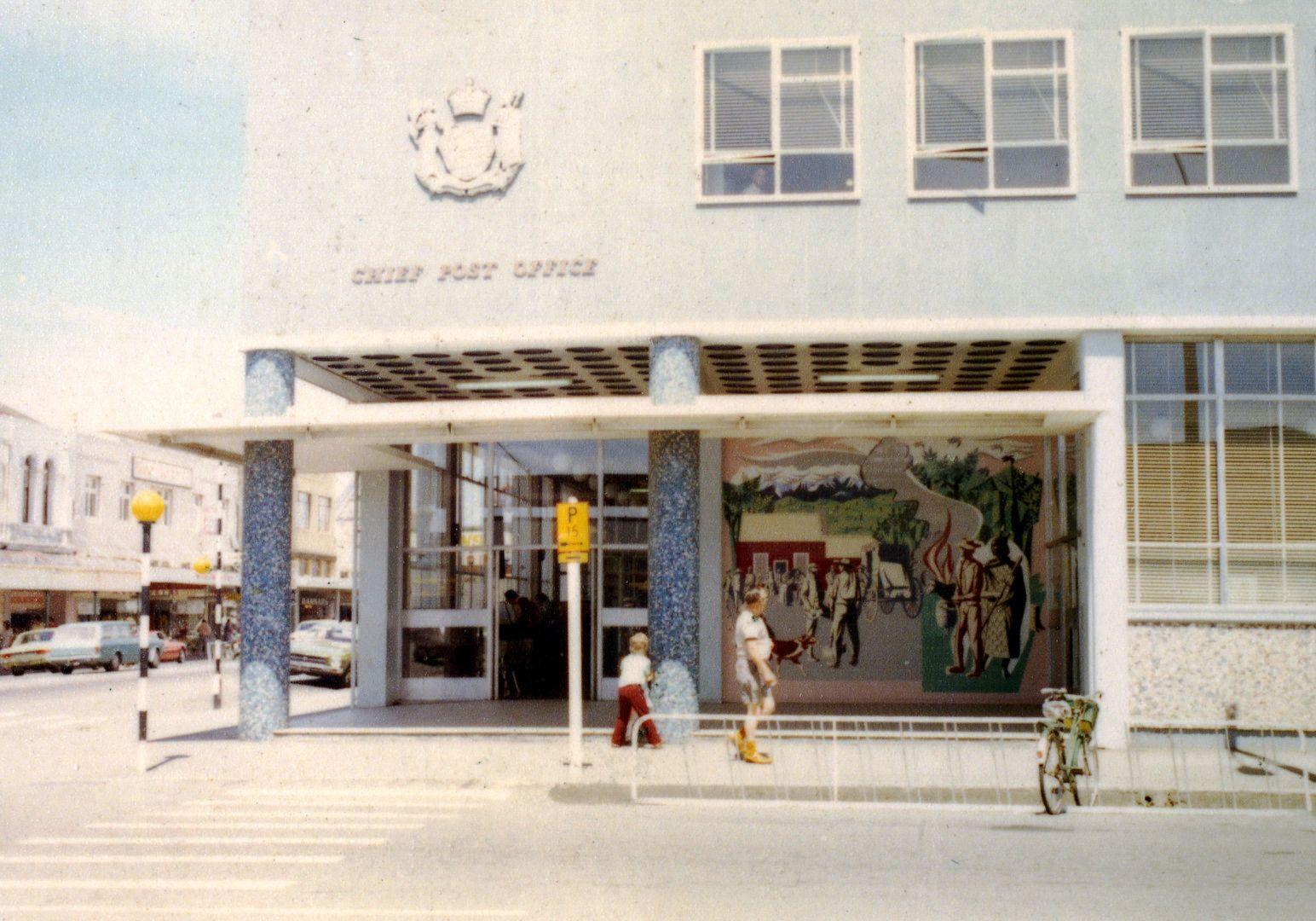
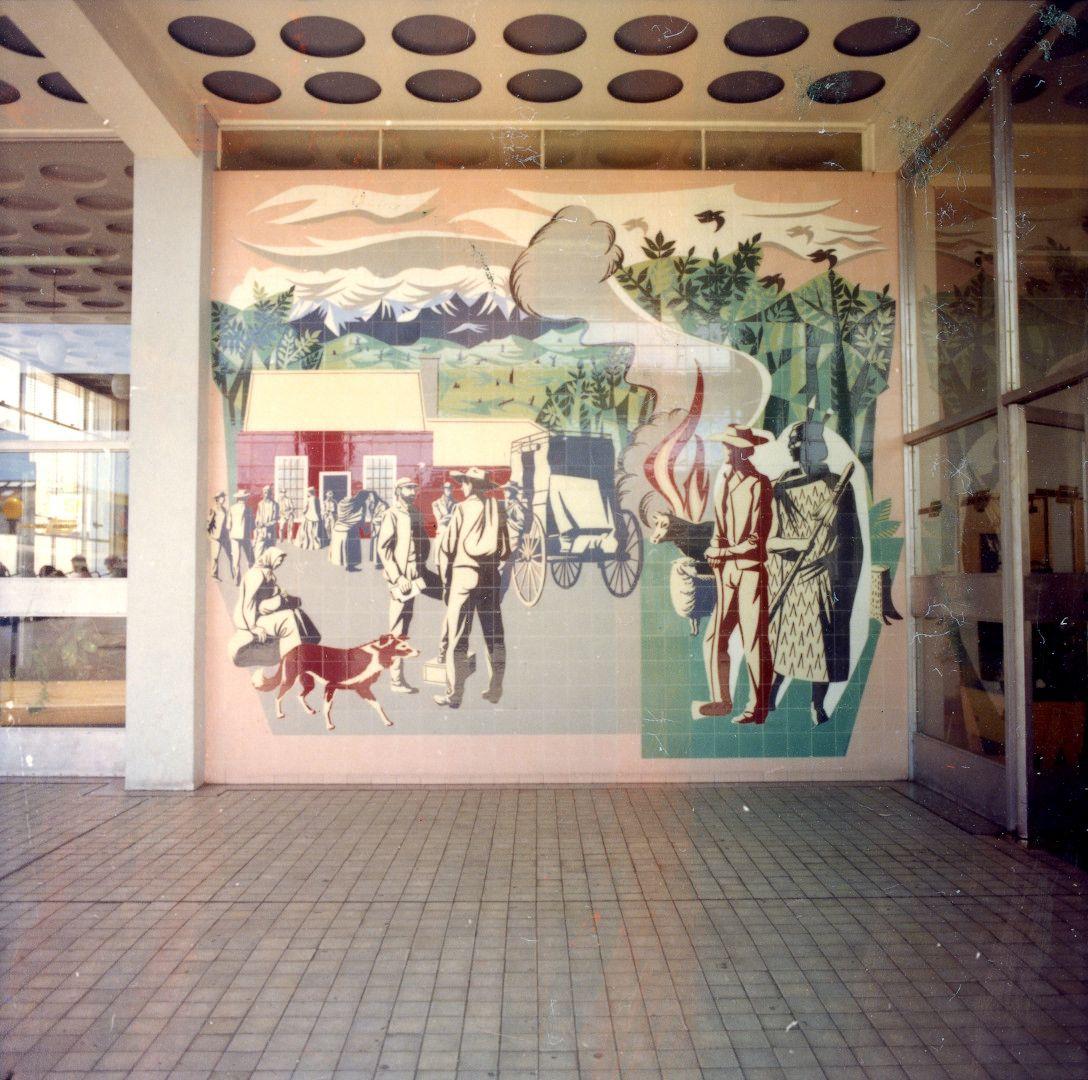
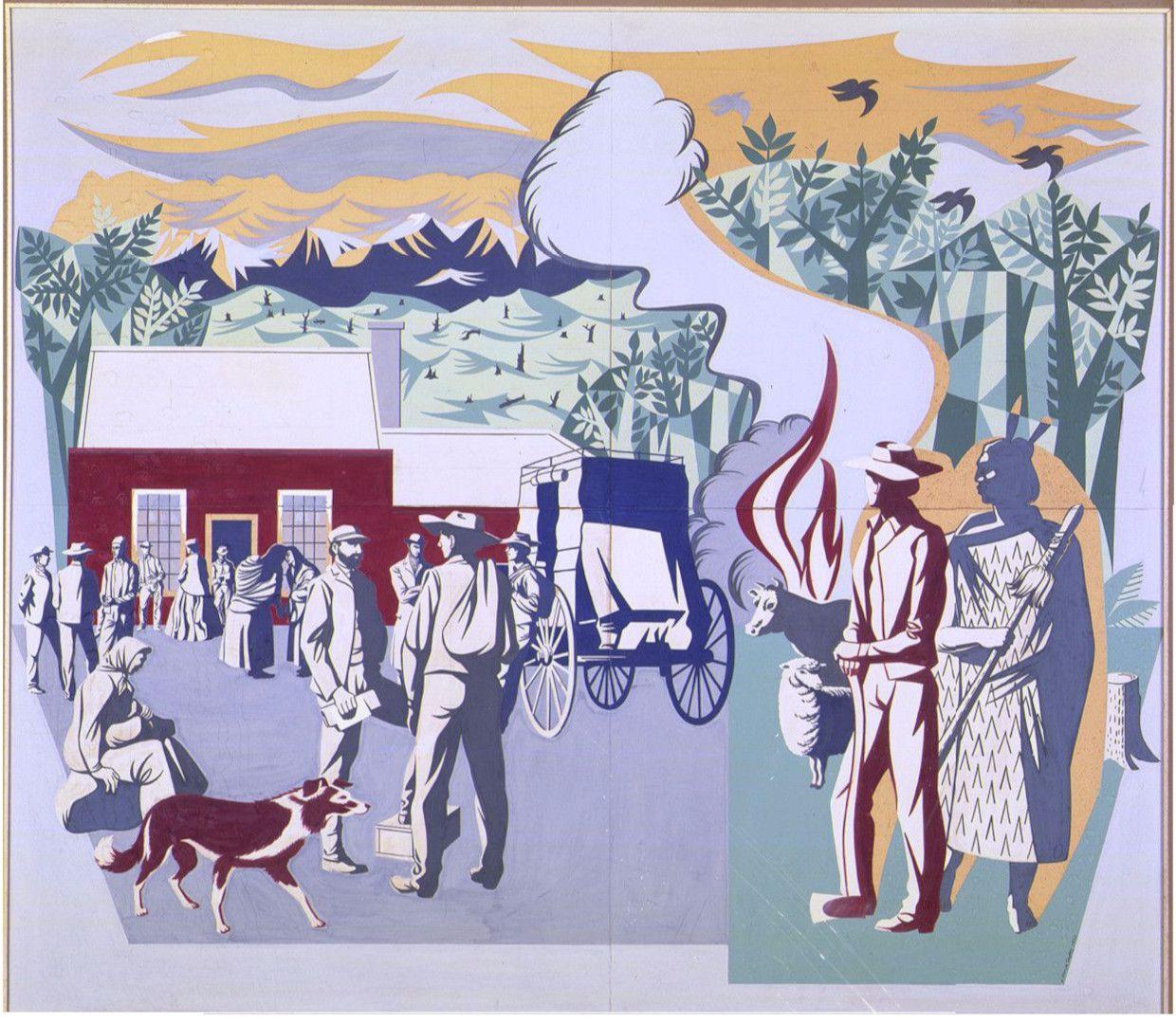
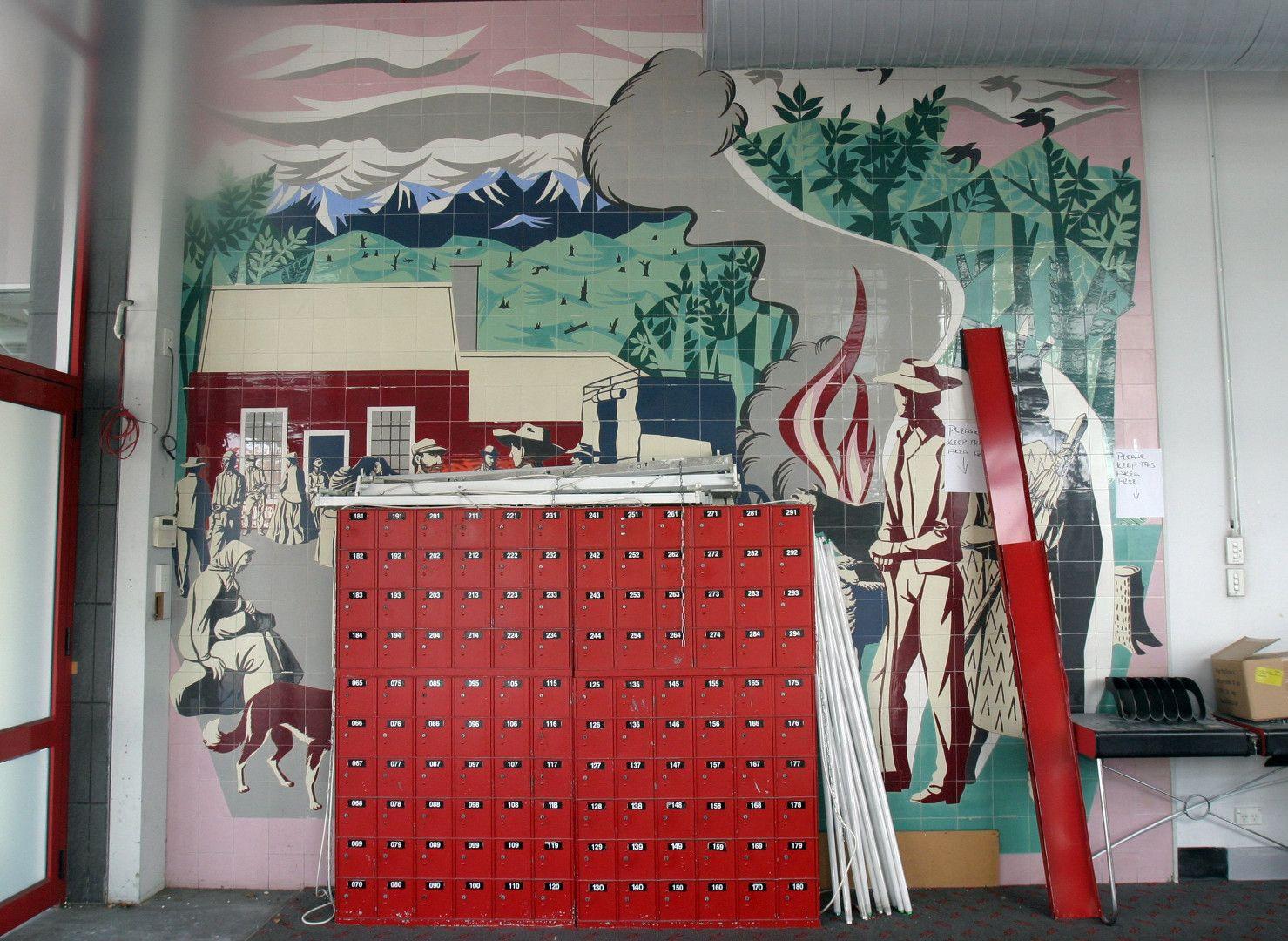
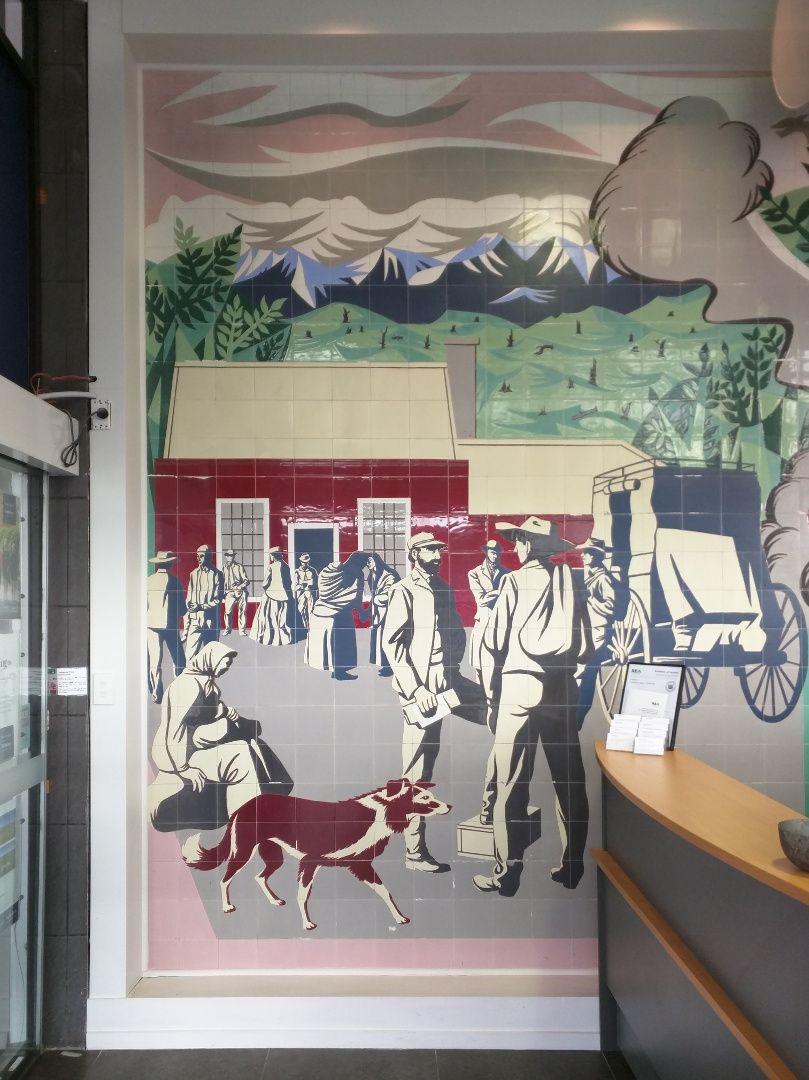
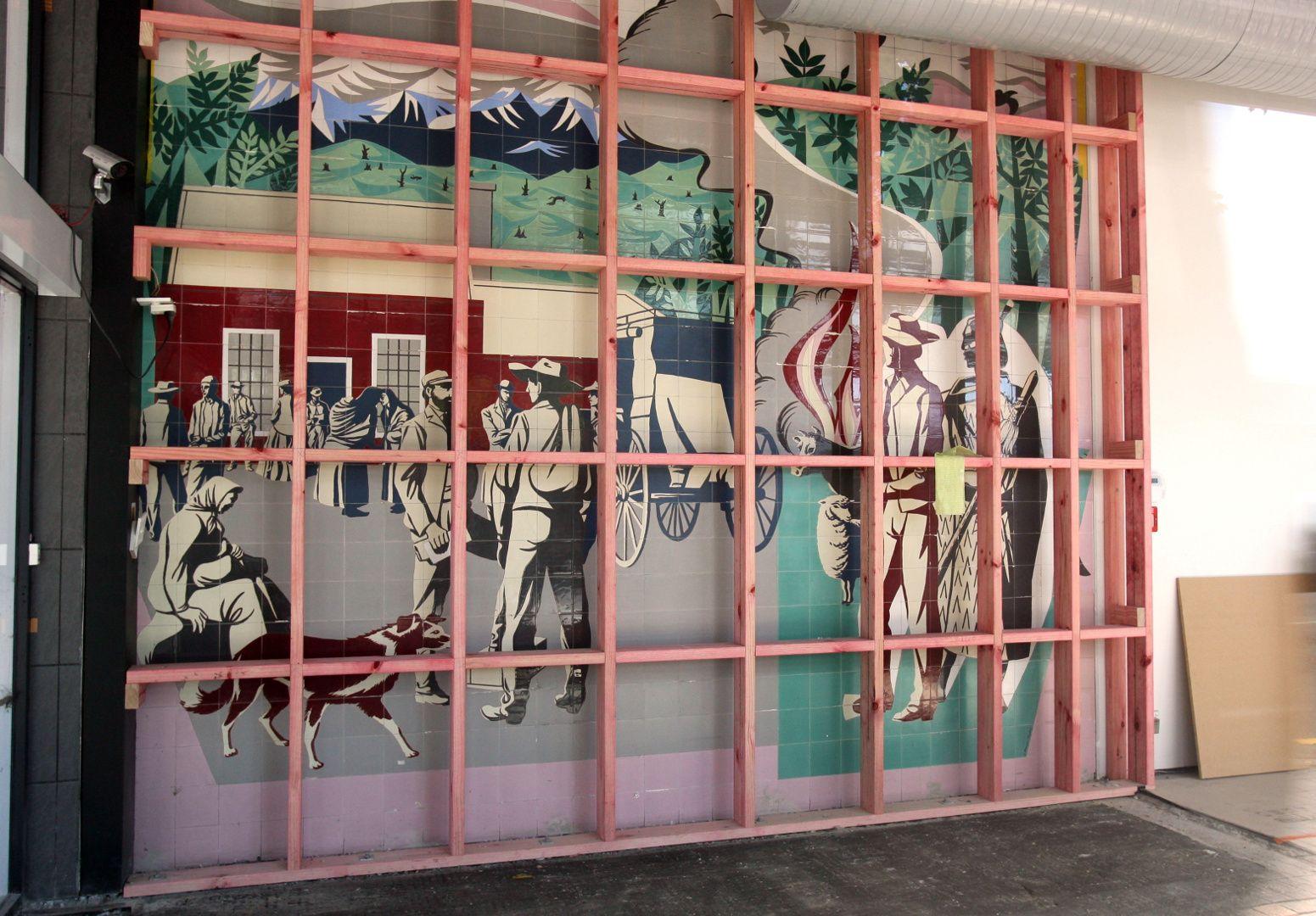
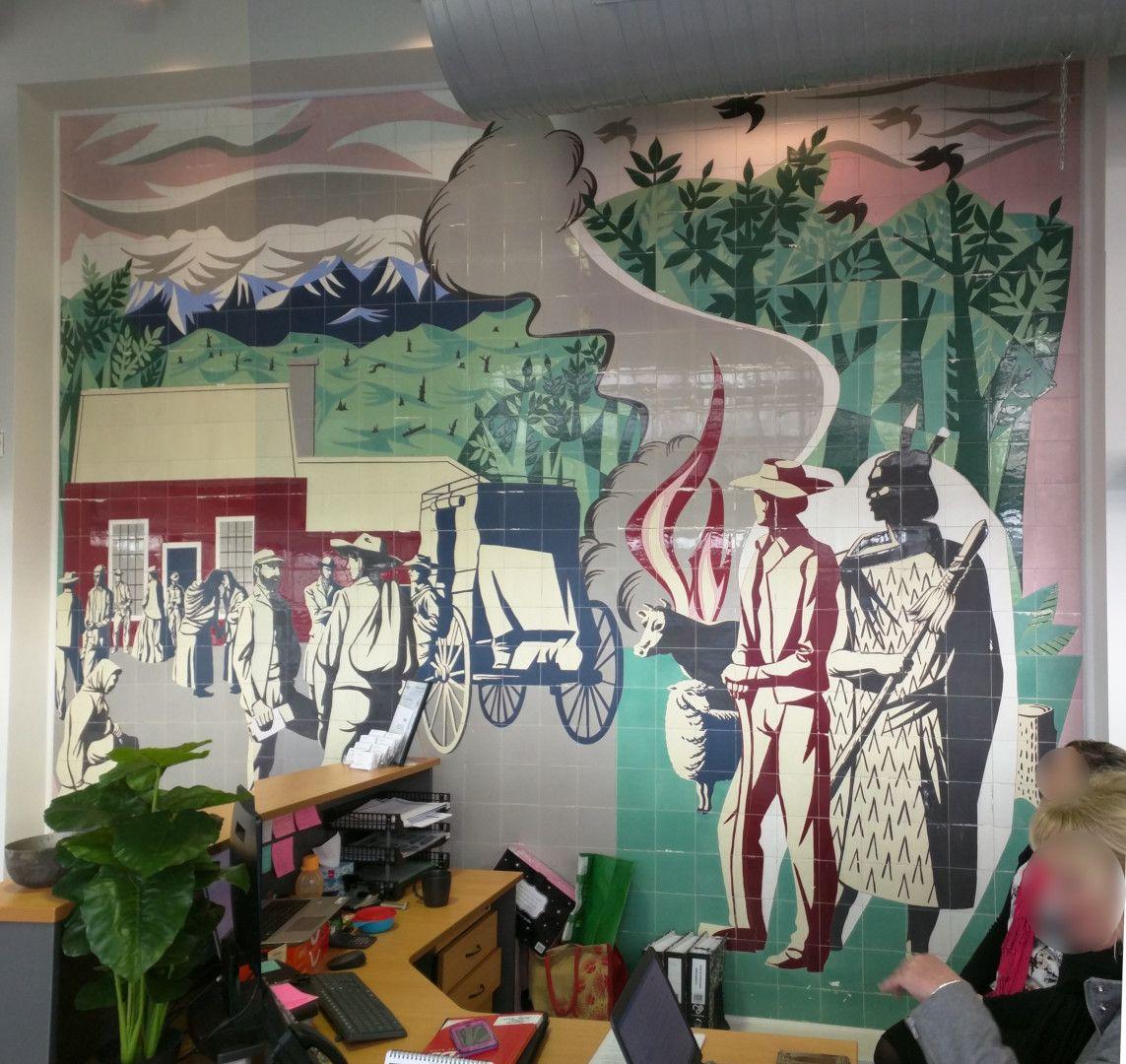
- DETAILS
- MAP
Description
In the early 1960s E. Mervyn Taylor was commissioned by Government Architect Gordon Wilson to create a mural for the portico of a new Post Office being developed for Masterton. The resulting ceramic tile work, Early Settlers, was unveiled at the opening of the new Chief Post Office in 1962.
Designed to catch a moment of time in the European settlement of the town, the mid to late 1800s, it depicts the importance of the town’s original Post Office building as both a communication link and social gathering place. The scene is set against a backdrop illustrating the act of deforestation—another strong theme of early settler life. In the right of the image two men stand side-by-side: a forestry worker with his axe in hand and a Maori warrior with his taiaha. Behind them stands a remaining section of forest with birds swooping above it. This is symbolic, considering that Pūkaha Mount Bruce officially became a national bird sanctuary in 1962—the year Early Settler was unveiled.
A contemporary viewing of this mural, however, touches upon a much wider narrative of land dispossession and the loss of what was known as 70-mile bush, Te Tapere ui a Whātonga, a forest that stretched from Masterton to Hawkes Bay. Taylor would have been aware of this history, which may explain why the taiaha is depicted ready for battle whereas the axe, with the forest nearly gone, is resting head down. Although both Maori and Pākehā are present, there is no interaction between the two.
The history of the mural has been no less complex. During the Post Office’s occupancy of the building, the portico was enclosed and Post Office boxes were placed in front of the mural. Later, after New Zealand Post had sold and vacated the building, retailers came in to the space and in 2013 a wall was built in front of the mural. The mural remained hidden until 2018, when the building’s new owner had the wall removed and returned the mural to public display.
